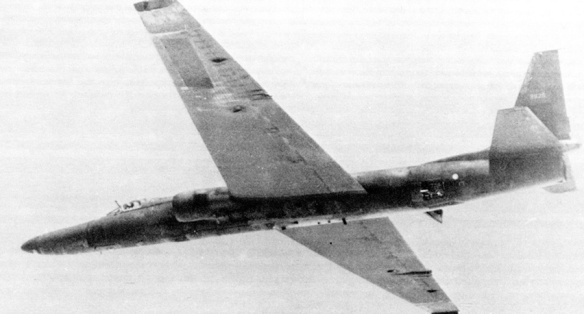
U-2C spyplane: The total number of U-2s built is unknown but is around 100, of which a proportion was shot down. Major Rudolf Anderson’s plane was shot down over Banes, Cuba, in October 1962 by a Soviet launched SA-2 missile, and at least nine were destroyed by the Chinese. U-2 flights over China, which began in 1960 and concluded in 1974, were flown by Chinese Nationalist personnel.
RUDOLF ANDERSON
The U. S. Air Force pilot of a U-2 overflying Cuba’s north coast on a photoreconnaissance mission early on the morning of Saturday, 27 October 1962. Major Anderson’s plane, designated as Article 343, was shot down by a salvo of Soviet SA-2 Guideline fired by Major Ivan Grechenov from the Banes naval base. The missile detonated above and behind the plane and shrapnel penetrated the cockpit and the pilot’s pressure suit at shoulder level.
Rudy Anderson’s flight, from McCoy Air Force Base in Florida, was the sixth scheduled for that day, but the five previous missions that morning had been canceled. He had made a previous overflight, Mission 3103 on 15 October, and had flown over 1,000 hours in the U-2 since he had converted to the aircraft in 1957. He was one of the two most experienced 4080th Strategic Air Command (SAC) U-2 pilots based at Laughlin Air Force Base at Del Rio, Texas. He had also trained at Edwards Air Force Base on the Central Intelligence Agency’s (CIA) new U-2C version, which was equipped with the SYSTEM-9 intercept warning device and jammer, and the SYSTEM- 12 receiver, which emitted a warning when a SAM radar locked onto the aircraft.
McCoy had been chosen as a suitable base for the overflights because of its proximity to Cuba, which would allow the aircraft to enter hostile airspace with only 660 gallons of fuel, thereby allowing the lighter plane maximum altitude of 68,000 feet. However, the National Security Agency’s (NSA) local intercept platform, the USS Oxford, had reported on 15 September that Soviet P-12 SPOON REST emissions, associated with the acquisition radar for SA-2s, had been detected. On 10 October, the NSA revealed that Soviet signal traffic indicated that the recent reorganization and reequipping of Cuba’s air defenses had now been completed and therefore posed a new, enhanced threat. CIA pilots would later complain that because the mission planning of the overflights had been surrendered to SAC, the usual precautions of not repeating routes had been abandoned, making it easier for the Cuban air defenses to anticipate incursions.
When informed of the loss, President John F. Kennedy considered an immediate retaliation against all the SAM sites in Cuba, but an accidental incursion over the North Pole the same day, by Major Charles Maltsby, led to him instead offering an apology to Nikita Khrushchev. All further overflights of Cuba were suspended for several days, until five missions were flown simultaneously in Operation GREEN ARROW.
CHARLES MALTSBY
The pilot of a U-2 on an air-sampling flight from Eielson Air Force Base on 27 October 1962, Major Charles Maltsby of the 4080th Strategic Reconnaissance Wing made a navigational error over the North Pole and strayed into Siberian airspace. A former member of the Thunderbirds formation flying team, Chuck Maltsby had been flying U-2s since January 1961, but the air sampling missions had only begun from Eielson on 25 August 1962. Alerted by his C-54 chase rescue aircraft that he had strayed from his route, Maltsby immediately changed course, but by then Soviet MiGs had been scrambled to intercept an intruder detected by radar over the Chukotsky Peninsula. A pair of F-102 fighters took off in response, but Maltsby was able to reach American airspace safely. However, as he was running low on fuel he attempted to glide part of the way home, but was unable to reignite his engine and was obliged to crash-land on a small civil airfield, making his flight of 10 hours 25 minutes the longest unrefueled U-2 flight ever. Although unpublicized, the incident occurred on the same day that Major Rudolf Anderson’s U-2 had been shot down over Cuba, and an RB-47 had crashed on takeoff at Bermuda at the start of what was intended to be a maritime patrol, killing all four crew.